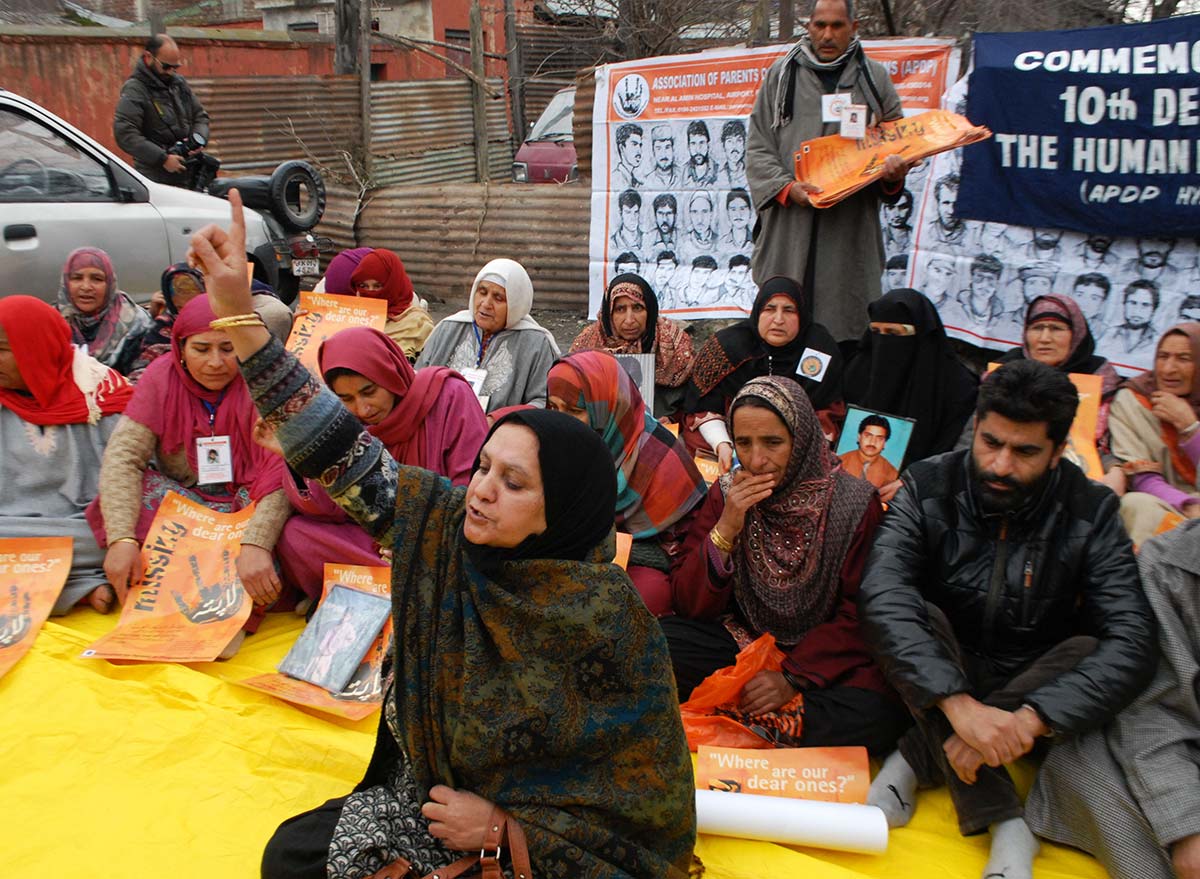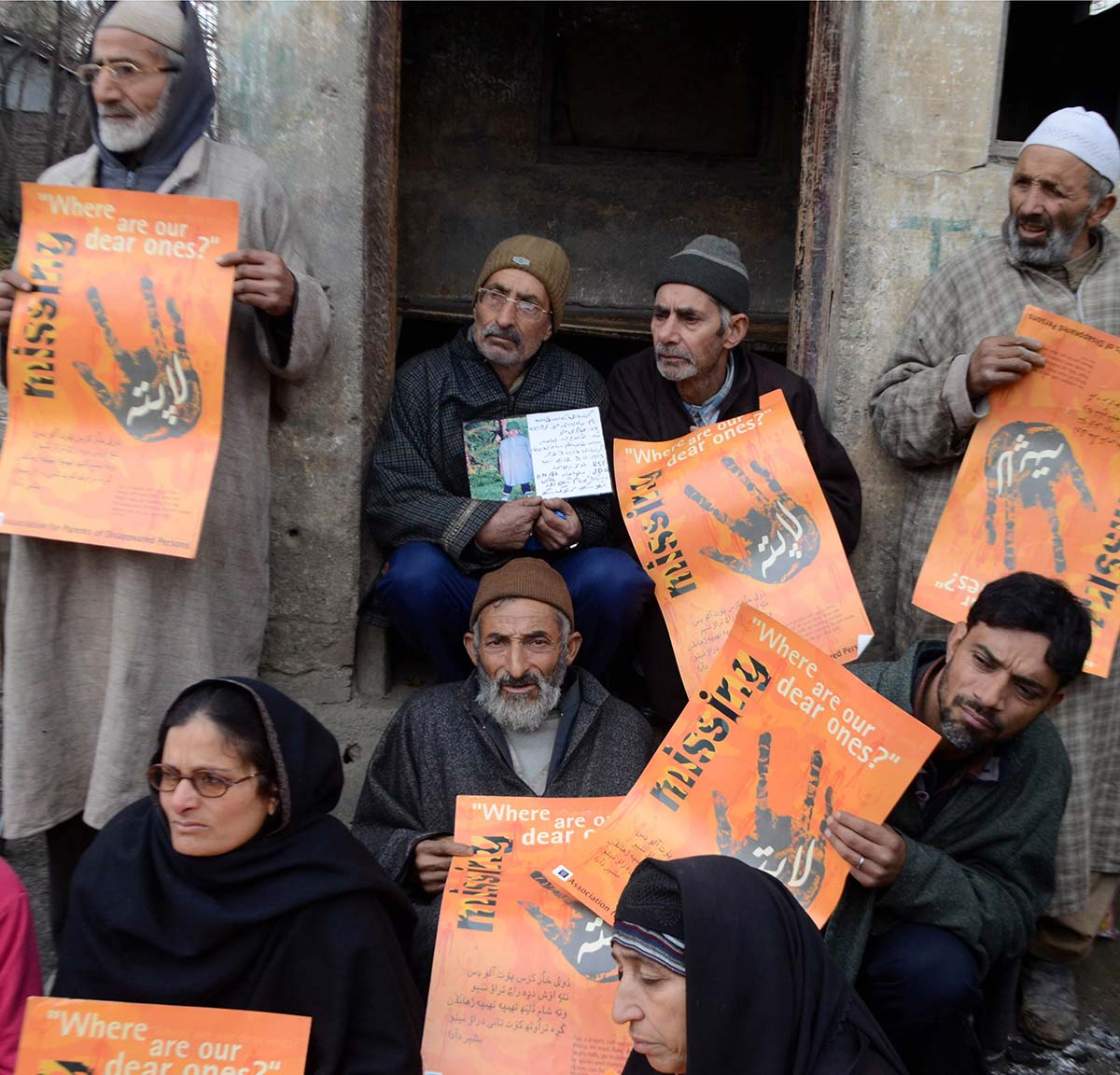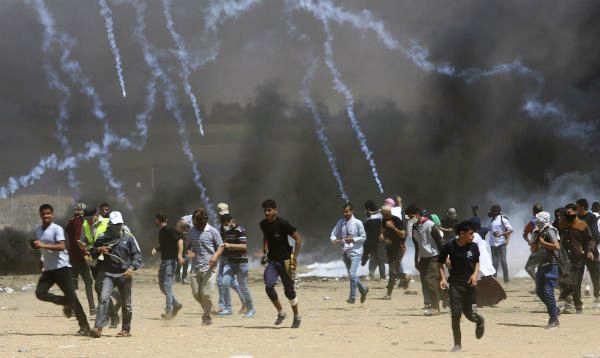Bilal Handoo
SRINAGAR

With icy wind blowing and giving shivers around, tear drops continue to trickle down from their eyes. It is another day of mourning and another occasion for a silent sit-in where the bereaved seek answers from the state, ‘Where are our dear ones?’
The answer has been eluding them since two decades. Yet their spirit doesn’t show even a trace of getting dampened. They still put up a united face of grief on every 10th of the month, rallying for justice.
For the day, the venue is shifted. The usual spot of protest – Srinagar’s Pratap Park – is getting facelift, forcing these families to spread a yellow polythene sheath on a rain-washed street inside Press Enclave.
Camera clicks compete with each other for a more melancholic capture of the gathering. The deafening silence makes the air mournful. The face of the protest, Parveena Ahangar, is inconsolable—so are the mothers from Lolab, Baramulla, Islamabad, Srinagar, Pulwama, Ganderbal…
The chill is intensifying, making them shiver. But, nobody is moving. The faint din of sorrowful conversations is punctuated by small bouts of sobs and occasional screams.
Standing near the sad sit-in is the young project officer working with Association of Parents of Disappeared Persons (APDP)—the body of parents seeking signs of their missing dear ones for last two decades. Already 8,000 Kashmiris have been reported missing in a security onslaught that was unleashed in valley once gun struggle started in 1989. APDP traces, registers the families of these disappeared persons for putting up a united struggle for the justice.
The young officer concedes with a sigh that the association may have to add another three families in their list.
The three Kupwara men—Ghulam Jeelani Khatana (42), Mir Hussain Khatana (45) and Ali Muhammad Sheikh (40)—are missing since November 17 last month. Their missing date coincided with the day when army claimed to kill militants in Kupwara encounter. These missing men had left their home to work as porters with army. “I fear,” the officer says, “we may have to add another three families in our list.”
“Already we have registered more than fifteen hundred families across Kashmir, and counting…”
The counting comes after arduous struggle and carries a heavy price tag.
It has been a long struggle for APDP—venturing into villages, city and towns—to trace, register the families having disappearance history. Initially Parveena Ahanger would be seen frequenting North Kashmir to register such families, but now she is often seen camping in South Kashmir.
“North Kashmir was and will always be a haunting place for the majority of disappeared cases in Kashmir,” says the officer, as the air becomes heavy with clicks and wails. “Of total disappearance cases, we have more than 60% disappeared cases alone from North Kashmir, with frontier areas like Kupwara, Uri, Tangdhar being the most affected.”
Since last two years, the APDP’s focus has shifted to South Kashmir, where the association have come across with many stunning cases. “So far,” the officer says, “we have come across the cases where teenagers, and youth mostly in their early twenties were subjected to enforced disappearance.”
“I believe, South Kashmir might shock all of us in near future.”
The other project officer present near the sit-in says APDP might stumble upon something very shocking in South Kashmir akin to what was discovered in North some years ago.
“There are apprehensions that most of the disappeared persons from South Kashmir might have been buried in some unmarked graves like in Uri’s Boniyar graveyard,” says the project officer, who shared details on condition of anonymity. “There is possibility of that as countless persons are still untraced there. Such cases have a common thread besides a history. It is not an assumption, but a serious apprehension…”
In December 2009, a human rights group reported that 2,700 unknown, unmarked, and mass graves, containing at least 2,900 bodies, in 55 villages in three districts — Bandipora, Baramulla, and Kupwara — of North Kashmir have been probed. It claimed 87.9 percent of the cadavers in the graves were unnamed.
Once the graves were located, the civil society demanded an independent investigation across Kashmir to find a link between 8,000 enforced disappearances with the number of bodies in unknown, unmarked, and mass graves.
“Shall I tell you something very shocking,” the officer pauses, and then hastens to add, “out of total 8,000 disappeared cases counted in valley till now, the fate of only two persons have been known.” One among the two was Abdul Rehman Padroo (the other being Nazir Ahmad Dekha of Islamabad).
Padroo, a carpenter from Kokernag was passed off as Lashkar militant Abu Zahid, and killed in a Ganderbal fake encounter. Among the seven accused was the former SSP Hans Raj Parihar, presently lodged at Central Jail Srinagar.
Padroo had gone missing from Batamaloo bus stand on December 8, 2006, and taken to Ganderbal’s Waskoora—where he was killed in a fake encounter by the Special Operation Group (SOG) men from Ganderbal and Sumbal. Special Investigation Team (SIT) exhumed Padroo’s body in Sumbal. And later DNA taken from the body matched with that of Padroo’s relatives in Larnoo Kokernag, thus confirming, the slain carpenter wasn’t a “Pakistani militant”. The SIT chief, Uttam Chand, later prayed for the punishment of the accused in the case he termed “the rarest of the rare cases”.
“We are yet to count all our disappeared sons,” says Parveena, taking a moment from her protest. “South Kashmir where we would initially dread to venture due to Ikhwanism is new territory for us to trace, register our disappeared sons.”
















